Text
Name-changer, game changer(?): MacOS Sierra - Apple WWDC 2016 Part 4
Here’s part 3 of our thoughts on the WWDC 2016. If you haven’t read the other two parts, here are the links to those blogs:
iOS 10 update
http://unscrambledblog.tumblr.com/post/147189201894/the-emojification-of-messaging-continues-apple
WatchOS update
http://unscrambledblog.tumblr.com/post/146155026534/time-for-some-much-needed-change-apple-wwdc-2016
Among all the updates announced at the Apple WWDC 2016, macOS takes the title of being the most noteworthy. So much so that it actually begins right with the name; Apple’s laptop software platform will no longer be called OS X but macOS in keeping with the rest of their software platforms.

Image credit: fossbytes.com
If you are a mac user, you’ll be glad to finally be able to say hello to Siri right on your laptop. You can now use Siri to search the web and your local files, add reminders and save search results to use them when required. If the use of Siri on your desktop extends to your iPhone we’ll have to see.

Image credit: mnmcdn.com
The next major update to continuity is here too, with the ability to copy and paste across devices. It seems like a small addition, but could be especially useful for those who are constantly switching between their phones and their laptops.

One of the key limitations of continuity was the lack of access to files and folders stored on your local system. But Apple has resolved this with the new update which provides access to your local desktop files on the cloud, provided you have the iCloud space needed to do so.

Image credit: applenapps.com
Talking about storage, macOS Sierra also optimises storage on your Mac by offloading documents, photos and videos you don’t use too often to the cloud provided, as always, that you have the iCloud space to do so.

Image credit: mashable.com
Photos and memories also add up to the Apple software experience, with Photos gaining valuable artificial intelligence to identify faces and locations in your photos. Memories extends this intelligence to make a collection of your photos and videos with a particular person or at a particular destination.

Image credit: theinquirer.net
Finally Apple Pay has now come to the web, trying to extend it’s reach but you will still need an iPhone to authenticate the transaction. There are also other updates like using your Apple Watch to unlock your laptop without having to enter annoying passwords. That feature might extend to your iPhones but we can only hope.
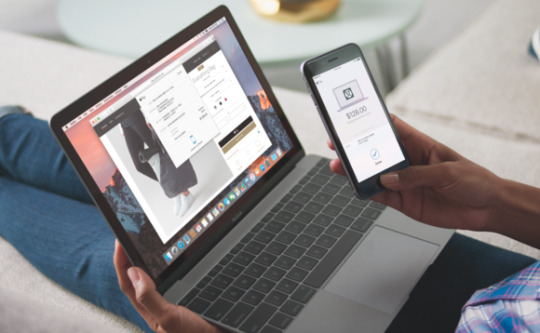
Image credit: theinquirer.net
Now, if you are wondering why there are not snippets of humour along with this blog, its because there’s really nothing to smirk at with this update. They are all meaningful changes that truly help the experience of using a Mac. Now that the software’s taken care of, Apple needs to focus on the hardware refresh for the Macs that is so long overdue.
Enjoy your week and we’ll see you(figuratively, of course) again soon!
0 notes
Text
The “Emojification” of messaging continues: Apple WWDC 2016 – Part 2: iOS 10
This is part 2 of our blog on the Apple WWDC 2016 and we take on the changes the Apple’s latest mobile operating system. If you haven’t read our take on the changes to WatchOS, you can find it here:
http://unscrambledblog.tumblr.com/post/146155026534/time-for-some-much-needed-change-apple-wwdc-2016
So what’s changed in the new iOS.

image credit: youtube.com
There’s been a major overhaul to the lock screen and notification toolbar. There’s more options to interact with notifications on the lock screen with 3D Touch. There’s also a clear all notifications option (thank heavens!). Apple has added the rise to wake feature (their version of Active Display, for all Android fans), which shows the user the entire lock screen (no ambient display mode or any of that, just plain full lock screen) as soon as the phone is raised or taken out of the pocket.

image credit: macrumours.com
You also now have the option to remove stock Apple Apps. But read this through before all you 16GB iPhone users (including me) do the Boogie. You can only hide these apps from the home screen, but they will still be installed on your iPhone. So no benefits in terms of any space.

image credit: macworld.com
The major improvements come with the opening up of Siri and a few stock Apple Apps, including Maps and Messenger to developers. You can now ask Siri for assistance with third party apps along with stock Apple ones. So you can now (finally) ask her to “Search Tumblr for the Unscrambled blog” (I know I’m pushing it here, but I hope this becomes a common thing to ask Siri for soon.). An extension of this is the integration of VOIP to your contacts. So you can call someone using services like WhatsApp or Skype right from your contacts. And also incoming calls with VOIP are received just like normal calls. Siri’s functionality now extends to these as well and you could ask her to call someone using WhatsApp. Further, and much needed, improvements come to Maps and Music. Both apps now offer more friendly and majorly overdone user interfaces. In addition to drawing locations from your calendar appointments, you can now add sub filters during map searches. This means looking for restaurants by cuisine or any other such sub filters. With Music, you now get lyrics of the songs right on the app itself. This, in addition to all the interface changes, makes Music a more realistic approach for those in the market for a music app.

image credit: wired.com
There’s a new app for all your “smart-home” devices called Home. You can use these apps to control all the devices, including your doors, lights and refrigerators.
But the biggest changes come to Apple’s messenger. Like Google’s Allo, there are now a host of new features for those really into making their messages look beautiful and feel personal. There’s now features to add effects to your messages like hiding the text, making them bounce and so on. If that’s not enough to express yourself, you also get effects for the wallpaper in your chat and you can animate that as well. There’s even a feature that lets you substitute words in your message with emojis (wait, wasn’t the whole point of emojis that you can save time not typing the words out? Now you type the word and then replace them with emojis? What is happening?)

While these changes have been in-line with most platform updates (read as Google), I believe Apple could’ve made a few added changes. One of the most awaited changes be the ability to customize quick access buttons in the control center. Also, Apple’s lack of multi-tasking features means that Google’s Android N will head in to this winter packing more of a selling feature than the new additions for Apple’s iOS 10.
Are these features enough to keep Apple at the forefront of mobile software platforms? We’ll have to wait and see. Let us know what your thoughts are and we wish you a great week ahead.
0 notes
Text
Time for some much needed change: Apple WWDC 2016 – Part 1: Watch OS
If you are a technology nerd, Christmas always comes too early. Starting with the Google I/O 2016, we’ve had a bunch of technology releases on the trot. If you missed the Google I/O 2016, you can read about it here:
http://unscrambledblog.tumblr.com/post/145099406134/turning-our-dreams-of-the-future-into-virtual
In this blog, we take a look at the Worldwide Developers Conference from Apple which is an annual event for developers to get a sneak peak at whats next for Apple in terms of software and support. We’ve split this into 4 parts, one for each of Apple’s software platforms, so we can go into detail without digression.

image credit: www.apple.com
It’s time to begin. And we start with watchOS (cause, you know, its “time” to begin. That’s a pun. You’re welcome.)
It wouldn’t be an understatement to say that the Apple Watch hasn’t quite lived up to what Apple touted it out to be. It could do with some significant hardware and software improvements, and it turns out that, at least on the software side, Apple has heard our pleas. Well, kind of.

image credit: tech n buzz
Starting with background refresh of app data and faster boot times for watchOS apps, Apple is striving to bring the fluid experience they are known for to the Apple Watch. watchOS now gets a control center with a swipe from the bottom in addition to the notifications tray at the top to streamline the experience and make it more familiar, at least for those who use iPhones. The button below the crown finally has a purpose (no, being dedicated for “DIGITAL TOUCH”, that no one uses, is not considered a purpose and nor is being a shortcut to your Favourite Contacts) and contains a docking station for apps that you most frequently use or the ones you used most recently. These apps are capable of background refresh and are a practical replacement to what was previously called “glances”. You’ve got better quick responses if you want to respond to text right from the watch and even an option to write out the message if you can’t dictate it used something Apple calls “Scribble”. Host of new watch faces too, including interactive faces with your activity feed right on the watch face.

image credit: alphr.com
The Activity Tracker has also evolved and can recognise activities on wheel chairs as well. You can also share your fitness details with fellow Apple Watch users (read as that ONE friend you have who owns an Apple Watch AND is interested in running), and these details include steps taken, calories burnt and (for some unfathomable reason) even your heartbeat. Press and hold the button on the Apple Watch and it sends out an SOS message, calling the emergency help line, sending out your location to the helpline and family members along with your medical details just in case you should need it. Will these services be available in India remains to be seen.
The public beta will be out in July and the full release will be later this fall.
On the face of it, these are all steps in the right direction from Apple. They greatly improve the functionality and the experience for the users and makes the Apple Watch a more viable option for a buyer than ever before. But I have my own concerns with this release.
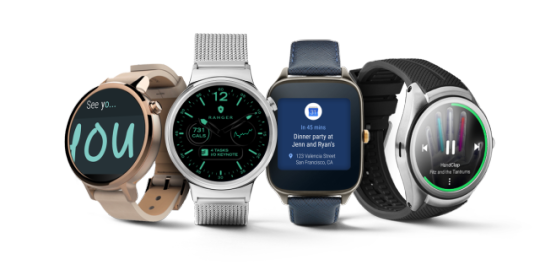
image credit: arstechnica.net
Firstly, I can’t help but feel that this release was how watchOS should’ve been right from the start. At least watchOS 2 should’ve adopted these changes especially faster boot times, background app refresh and ability to dock applications. And, not to be an Android Wear fanboy here, but most of these changes have already been part of the Android Wear experience for a few months now. They’re both great devices, but the distinguishing factors are fast fading away.
But more importantly, these updates do not deal with the most fundamental problem the Smartwatch faces - a lack of definite purpose. It’s hard to find that one compelling function that Smartwatches can perform better than every other device on the planet. This will require providing a lot more independence to the Smartwatch and it is the one thing I believe Apple missed out on this time around.

image credit: inverse.com
Lastly, and right up there on my “Why-would-I-need-this” list (it’s just my list), is an update to the Apple Watch that reminds you to breathe. Alright, it’s not that naive. It reminds and guides you through breathing exercises on a timely basis to help you focus or calm down.
You know, just in case you suddenly realise how much money you’ve actually spent on all your Apple devices. Or have the sudden urge to buy more.
(I’m kidding. Relax. Breathe.)
1 note
·
View note
Text
Turning our dreams of the future into Virtual Reality, with Artificial Intelligence: The Google i/o 2016
Perfect weather. Perfect location. If anyone has ever dreamt of the perfect rock concert experience, it was on display. But here’s how much times have changed; the performers weren’t actually rockstars. In fact, they weren’t even professional musicians. Just the most elite bunch of nerds on the planet, all gathered in one place.

There are very few companies that can engender the kind of excitement that Google can. But, in all fairness, there are so few companies with the power to define our future all by themselves.
There were so many features and announcements over the three days that we couldn’t possibly keep up with them all. But we did hand pick a few highlights and put them together for you.
Google are drawing the line at the end of the mobile moment and the start of the VR and AI transcendence.
It’s been a while since we’ve had a Google Keynote where Android wasn’t the showstopper. This developer conference was more about looking at the future of devices and the turn they would take in the near future. While this is in no way to say that we will never again see another revolutionary smartphone, the possibilities seem on the down low. On the other hand, VR and AI are the new kids on the block; showing immense promise and going where no man (or machine) has gone before.
The real major product for Google (at the moment) is Google Assistant.
Google is extremely ambitious in it’s efforts to spread the use of Google Assistant across the consumer space. With Allo, Google gets another peak at your personal lives (in addition to going through your mail and queries) and makes personalised suggestions based on your chat. Restaurant suggestions, bookings, calendar appointments, reminders and much, much more can be now be done without ever having to leave the chat app. It’s much the same with Google Home; the Google Assistant is what takes this device to a whole other level when compared to the Amazon Echo.
Google is leaps and bounds ahead of everyone else on VR and AI.
Google’s major products have already been rebuilt to accommodate, what they perceive, is the future trend. The Play Store, YouTube, Google Maps, Street View etc. are all VR ready. Add to this the fact that, with Day Dream, Google will be developing the foundations for both mobile-integrated and stand-alone VR and you have a combination much like the accession of Android we have seen over the last few years. It’s much the same story with AI; Google Assistant is the singular juggernaut voice assistant for the masses. It is constantly evolving and learning and, in the process, advancing itself almost embarrassingly ahead of all it’s contemporaries.
Project Ara is alive and well.

It’s finally showing signs of progress; we blogged about the Project Ara on our series about modular smartphones and we’re excited about what we’ve got to see. While it is true that the time for delivery to customers is delayed, Google has promised developer units by this fall. The concept of modular smartphones, not online VR and AI, has lacked leadership from a global player with LG being the only mainstream manufacturer working on an extremely scaled down concept. Google’s entry in to the modular space might just be what the world has been waiting for. I, especially, can’t wait for customisable hardware.
If you haven’t read our blogs on modular smartphones and Project Ara, you can find it at the following link:
Do you agree with Google that we are nearing the end of the mobile journey? Or do you believe that the smartphone has a few good years left? Let us know.
Also check out the podcast on a new channel titled Urban Chatter for the first edition of the Tech Talk where we talk about the Google I/O, Apple, Motorola and so much more. You can find the link to that here:
youtube
Here’s wishing you a great week ahead.
#unscrambled#Google#io2016#technolog#VR#virtual reality#artificial intelligence#Duo#allo#home#Project Ara
0 notes
Photo

Google claims its Tensor Processing Unit (TPU) is 7 years into the future ahead of Moore’s Law
109 notes
·
View notes
Text
HTC 10: Back on track but a little too late?

The Taiwanese firm which garnered the world’s attention with its stylish uni body all metal phones is back again with its next installment. Enter HTC 10! Supposedly they have dropped the ‘M’ because according to #HTC, 10 stands for perfection (Duh!) and they want a solid phone 10/10. Full marks on the thought but do they deliver on it?. Lets find out.
DESIGN
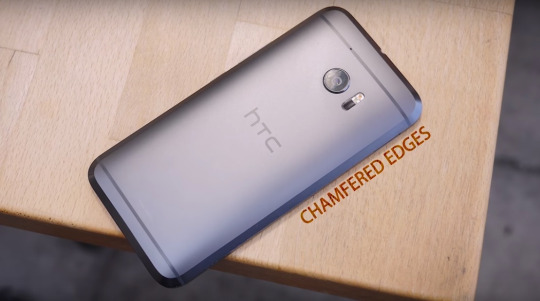
Well from the design point of view, it feels like a lot has changed and at the same time, a lot has not. The HTC 10 has a prominent chamfer all along the back edges that sort of engulfs the phone. The early images of the design of the phone were polarizing but the end product does seem great. The light bounces off that chamfer elegantly giving it a sparkling finish aesthetically and it also feels better in the hands, giving it a more natural feel on holding. The basic body is a blend of the iconic M8 and A9 designs with the antennae bands at the back. The side volume buttons are aptly placed and the texture on the power button feels great. The 3.5mm jack is at the top centre.

HTC seldom does wrong when it comes to design and the same goes for HTC 10. It has premium written all over it.
HARDWARE

HTC 10 has a 5.2 inch Super LCD5 Capacitive touch screen with 565 ppi. Qualcomm Snapdragon 820 makes up the chipset with 4 gb of ram. Battery has been amped up to 3000 mAh which HTC claims to get you 2 days of usage. The phone also has the Quick Charge 3.0. And as has been the case with HTC phones, we have the microSD slot with built in 32/64 gb of memory which is great.
SPEAKERS
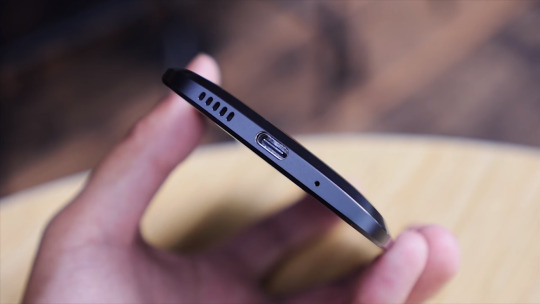
Earlier HTC had ‘quietly brilliant’ as their company tagline but ironically their loud crisp speakers have become their USP now. The speakers on HTC 10 have gone under the knife for a major revamp. HTC has ditched the front facing dual stereo speakers this time for better or for worse. HTC 10 now has a top speaker and a sub woofer at the bottom that is supposed to give better crisp low sounds. They probably arent as loud as the previous iterations but sure are much better and definitely crisper than the competition. But put in a good headphones and the magic conjures up. HTC has now put in a 23 bit DAC and a headphone amp in the 10 which makes the Boom sound go, well…BOOM!
CAMERA

The camera has always been the missing link for HTC and it was something they were falling short way behind the competition. This time HTC has really outdone themselves in the camera segment. HTC 10 has a 12 MP shooter with bigger pixel size (1.55 microns) and OIS. The camera app has been streamlined with the various camera options at the left and the controls on the right. 4K recording is there in case your wondering and this time you can even record better crisp audio for videos (what use are those crisp speakers otherwise).

But well the major development took place in the front camera which has OIS as well which is a first of its kind. This is a boon for the vloggers and 5MP certainly goes a long way. HTC 10 definately has the best camera ever by made HTC and well it was about time for them to do that. Its still not the best out there but it can easily give you a consistent performance as your daily driver.
SOFTWARE

Marshmallow 6.0 with SENSE makes up the UI. This time the UI is much cleaner with HTC cutting the redundancy of app duplicacy due to their work with Google. So instead of the HTC gallery, we only have the Google Photos and so on. This is a great step by HTC and certainly paves the way for the next Nexus (too soon to talk about?). There is the Boost plus application which cleans up the junk and RAM to speed up the phone. It can also lower the game play resolution to Full HD from Quad HD to save up juice which is great. We still have the Blink Feed and HTC’s Theme Engine engine with few more tricks up its sleeves. With no cartoonish icons and cleaner build, SENSE certainly makes SENSE. (no pun intended).

HTC 10 surely does most of the things right this time which should certainly help them make a come back. It checks most of the boxes and it does the most important things really well. My only regret is that this phone did not follow up the One M8 or M9. A very good camera was long overdue and it took them a while to come up with that. We have already ventured into the world of modular phones (read our last blog), curved glasses, wireless charging etc. and HTC has taken their time to get the basic things right. Why so late? Well I only hope that HTC takes it to the next level with their next phones and dont look back. We expect the same and more from the pioneers of premium metal phones. And rest assured, the HTC fans will be delighted with the 10.

Maybe HTC 10 is not about fighting the competition. Maybe its about showcasing the world that the Taiwanese Giant can still make great head turning phones if they want to. Maybe its about catching the worlds attention again. And maybe it will.
0 notes
Text
Where do we go from here?: Project Ara and the LG G5
This is part two of our blog on Modular Phone Design. If you haven’t read the first part you can find it here:
http://unscrambledblog.tumblr.com/post/142165881959/the-first-piece-of-the-puzzle-is-also-the
Project Ara is Google’s (read as Motorola’s Advanced Technology and Projects Division’s) attempt at making the Modular Phone Design dream a reality. And Google’s participation in this is both an advantage and a disadvantage; we’ve seen google turn abstract ideas into mainstream products before so we know they can do this but they also have a very patchy relationship with hardware. (The only products they’ve built COMPLETELY in-house are the Pixel C Tablet and the Chromecast. While they are good, they aren’t really as complicated as what they are attempting with the Project Ara).

Image credit: hit-counts.com
Google promises a highly modular phone consisting a frame and all the other components in the form of modules called “endos”. Google will issue a starter kit at USD 50 which includes the basic necessities including a low-end CPU. The frame will be available in three sizes; small (Nokia 3310-ish), a medium (Nexus 5-ish) and, in the future, a large (Galaxy Note 3-ish). Google also has, earlier, this year began polling users on how much they would be willing to pay for various additional modules.

Image credit: gigaom.com
Whilst these all sound very promising, progress hasn’t been without hurdles. There were several blow-ups in testing which caused huge delays in the prototyping and while Google did claim in Feb 2016 that they had finally gotten it right and were hoping to start taking pre-orders the product by the May-June 2016, rumors claim there has been a further delay.

Image credit: tech.firstpost.com
This is where the LG steps in. The LG G5, which was released earlier this year is the best we have at the moment when it comes to Modular Phones. It is, by no means, the sum total of what we dream of. Instead, its the first step in the right direction.
The LG G5 does not try to provide as much customizability as the previous iterations; the screen, CPUs, GPUs and the networking hardware are built in and cannot be tampered with. What can be altered, at the moment, are the battery, the camera and the audio amplifiers but LG claims there are more “FRIENDS”(yes, that's what the modules are called) on their way.

Image credit: gsmarena.com
This ensures that if you ever find yourself in a situation that demands a better camera, you can swap out your current one for a more suitable lens. Or if you are off on a trek without a power bank, you can swap out your existing battery for a bigger one.
The applications seem interesting, if also slightly limited. But the LG G5 is, like I stated before, the first step in the modular phone direction. It’s Version 1 with a long way to go.
So, that was it on modular phones and the different attempts at them. What do you think of them though? Are you excited by the direction phone tech is taking?
Let us know!
0 notes
Text
The first piece of the puzzle is also the toughest: Modular Phone Design
For the last few years, technology has progressed at a pace beyond anyone’s imagination. Focusing on mobile phones especially, these haven’t been incremental changes; everything from battery and camera technology to data speeds and hardware performance have increased exponentially. But this has made us take for granted that there will always be exponential technology upgrade and that the next thing is always just around the corner. But is it?
Don’t get me wrong; I’m not being a pessimist and saying all good things in the world have come to an end. But every technological advance today is a better iteration on a small scale as compared to our first jump to smartphones or to touch screens or to 3G and 4G. It begs the question: what is the next big thing for the mobile phone?

Image credit: venturebeat.com
If you’ve been following the mobile world lately, you’ve heard talk of the LG G5. It’s not just any other flagship smartphone; it is the first attempt at something we call “Modular Phone Design” by a notable smartphone maker to hit the markets. I can’t see the future, but this could be a serious contender for what is next for the mobile industry.
But before we go ahead and take a look at the LG G5, I think its important to have some context. How did we get to the LG G5 is as interesting, and as important, as where we go from here. We begin with what “Modular Smartphones” mean.

Image credit: wired.com
A modular smartphone is one with modules connected to the central chip. These modules may contain the memory (RAM and storage), battery, camera, charging ports, audio and video jacks and connectivity hardware like Bluetooth and WiFi. The key feature is that these modules can be interchanged based on requirement. So, for example, if your software platform upgrade requires a higher RAM capacity, you can simply switch out your current RAM Module for a bigger one. If you are off hiking and need a bigger battery and better camera than you generally do in day to day life, you can switch those out too.

Image credit: thenextweb.com
In 2013, Phonebloks came up with the first concept for a Modular Smartphone that received any attention. It was created and designed by David Hakkens, a Dutch designer, who called these modules “Bloks”. They could be bought at the Blokstore and could be used to extend the functionality of the phone in a specific direction. His major target was to reduce electronic waste generated due to scrapping of old phones and buying new ones. Instead, he professed, you could make upgrades to the Bloks and own an up-to-date phone without the waste.
As promising as the concept was (it exceeded 900,000 supporters on Thunderclap), it faced several issues. Majorly, it was too expensive to manufacture these segmented phones. Also, with no third party manufacturers currently making “Bloks”, there was limited choice of customization. There were also technical issues: the Bloks couldn’t be as well integrated to the chip as in a normal phone and this lead to breaking apart of phones and even signal loss. The pivotal reason was the extremely high level of “modularity” that Phonebloks sought to bring.

Image credit: allaboutprojectar.com
To correct this shortcoming, David Hakkens collaborated with Motorola who were working on something similar in 2013. This new project upheld most of the concepts of Open Source Modular Design but reduced the level of modularity by making these modules sit on an endoskeleton. While Motorola is now part of Lenovo, the Advanced Technology and Projects division of Motorola Mobility that began this project and named it Project Ara stayed under it’s previous parent company - Google.
More to come. So stay tuned!
#unscrambled#technology#google#motorola#lg#g5#phonebloks#modular#phone#smartphone#future#project#ara
0 notes
Text
Good things do, sometimes, come in small (and expensive) packages: Apple iPhone SE
It’s only the end of March and we already have a new iPhone to talk (and crib) about. We also have a new iPad, but I think that’ll be for the footnotes. The focus is all on youngest, smallest and cheapest member of the Apple iPhone family.

Image credit: express.co.uk
Lets face it, the iPhone SE isn’t a major rethink of the iPhone. It’s more like an exercise in permutation and combination; the design (and front facing 1.2mp camera) right from the iPhone 5s with the internals from the Apple 6s. So it has 2GB of RAM, Apple’s A9 chip with the “always-on” M9 co-processor, the same (gorgeous) 12mp shooter as on the current Apple flagships all enclosed in a 4-inch chassis. It also has a relatively huge (I’m comparing it to the iPhone 5 here)(No, I’m actually just being sarcastic) 1642 mAh battery. Couple that with the smaller graphic real estate and the latest iOS version, this might just be the best battery life you get out of any iPhone, ever.
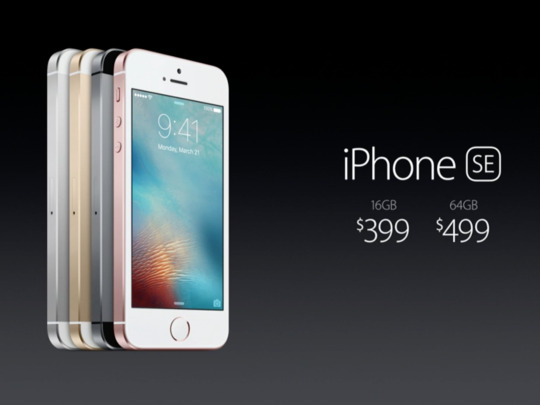
Image credit: techinsider.io
So it’s an iPhone 6s wearing the iPhone 5s’s prom dress. This seems like a pure business move by Apple; now that their sales at the high end are saturating, they are looking for new avenues for profit. Apple claim there’s a huge market waiting on a really powerful 4 inch phone and that this iPhone, at its price point, will be the first iPhone for a lot of people. But 499 USD (for the 64 GB variant, don’t get me started with the 16 GB version) is no “budget” phone pricing either and, for the same money, will have to wipe out a LOT of Android competition. I still question the market for 4 inch phones and also the fact that the iPhone SE does not boast Apple’s 3D Touch Display (Wasn’t that supposed to be the next big thing from Apple?) You might argue that this phone was built at a price, but I believe they could’ve sacrificed elsewhere to accommodate 3D Touch if they really wanted to.

Image credit: hulutrip.com
To make things simple, this phone is for a very particular category of people; You must really want to own an Apple device, need to really want a 4 inch display and be willing to overlook every Android phone available at about 40,000 INR.
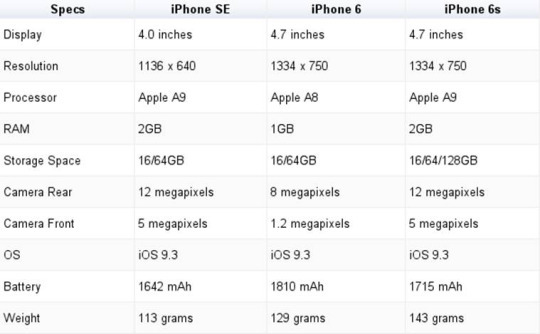
Image credit: indianexpress.com
But what this phone offers (and what I am really envious of) is the chance to get to know what Apple is all about at a price lower than ever before. What it will get you is the best in class performance, best in class feel, best in class camera and best in class EVERYTHING else but only if you can live with a 4 inch screen. More than everything else though, you get the Apple Experience. And sometimes, and for a very few select people, that’s a deal they can’t refuse.
2 notes
·
View notes
Text
Focusing on the right elements, and the cool ones too: The Samsung Galaxy S7 and S7 Edge
Lets first take a moment to realize that we do live in a world where the release of a smartphone would “out-glamour” most fashion shows. (Not like I’ve seen too many of the latter!)
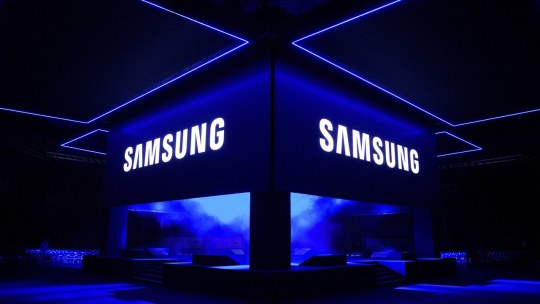
It is that time of the year again; The Mobile World Congress (MWC) 2016 is here and, right on schedule as per the Geek Calendar of the World, Samsung and LG have their new flagships. What is interesting though is that the two phone makers have gone completely different ways in their idea of the present of the mobile phone. The philosophies are different, the approach is too. But what’s common is the end effect: Android is cooler than ever before.

The fact that Samsung made a pretty incredible phone last year, with the S6 and the S6 Edge, is somehow masked by the features they had chosen not to offer: A removable battery and removable storage. The S7 and the S7 edge deals with those right away; Way bigger batteries (3000 mAh and 3600 mAh, respectively) and a return for the microSD card slot (upto 200gb). The new phones also mark a return for water and dustproofing, with the phones being IP68 rated(they can survive under 1.5 meters of water for about 30 minutes, although no one in the right minds would recommend a real world test). An always on screen( which shows you limited information like time, calendar or your next meeting as soon as you take your phone out of your pocket without having to do anything to wake it up), fast charging and improved functionality for the edge display(on the S7 edge only) are the added changes.
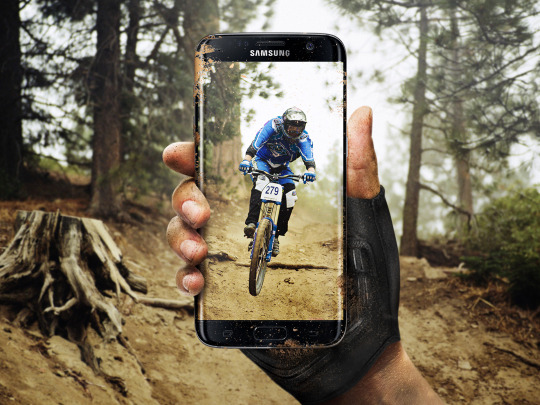
What’s more, they’ve gone on to improve what was already the best smartphone camera (according to DXOMark) by improving the pixel size and the aperture settings to facilitate better low light photography. They’ve got the standard upgrades as well: 4 GB of RAM(up from a mere 3GB) , QHD Display, Exynos chips (30 % faster than the previous gen and apart from in the U.S. where they’ll use the Snapdragon 820) and an improved GPU (about 60% more performance as compared to the previous gen). Will the always on display, which Samsung promises only consumes 0.5% battery for every hour of usage, eat away at the battery? We’ll have to wait and see. We’ll also have to wait and see about TouchWiz - Samsung’s infamous Android skin which has been the weakest link in the Samsung flagship for too for long now.
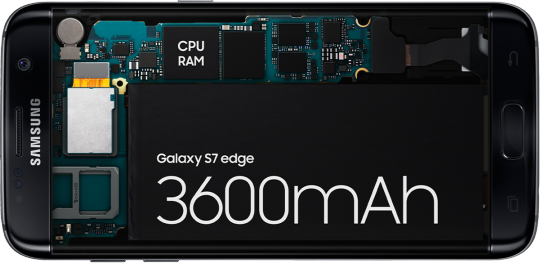
Now, I know what you are thinking: But what’s new? Where’s the Samsung of old who would try the most absurd feature like a screen with a curved edge on one side or who put heart rate sensors into their phones? Where’s the “3D Touch” screen they were supposed to copy off of the Apple iPhones? Well, if that's what you wanted then you have every right to be disappointed. But if that's not the case, it’s hard to fault this phone: insanely gorgeous display, build and feel, a camera at the standard of no other, beyond-earthly (and “water”-ly?) performance, above reasonable battery size and external storage options.
It doesn’t solve world poverty and it can’t make you a milkshake or grab you a beer based on your heart beat readings. Not yet at least. But everything a phone should and can do, the Samsung Galaxy S7 and S7 Edge can probably do best.
0 notes
Text
Is the Cloud our answer? Or is all just a puff of smoke? : The Nextbit Robin
Before we begin, you’re welcome. “The pun in the title is really clever!” I know. You can surely not doubt how awesome I am now, can you?
The last couple of years have seen an immense growth in the mobile space, particularly on the hardware front. The number of phones boasting top-of-the-line specifications (including screen resolution, processor, graphic processor, camera resolutions, RAM etc.) has increased and their prices have decreased correspondingly. The flagships have actually had to resort to alternate features like Force Touch, 3D Touch, Edge displays and 4K screens to stand out from the rest of the market and this bodes well for the average consumer. As we inch towards the inevitable stagnation on the “meaningful”-performance-improving-hardware-update front, there are two major hardware sectors which still need work. The first, and most important one, is the battery technology. The second, and the one we deal with in this blog, is storage.
(You could argue that camera technology needs to get better as well but, and I’m just asking here, isn’t that what stand alone cameras are specifically made for?).

Picture courtesy: techgadgetcentral.com
Enter, Nextbit Robin. The “Kickstarter” project from 2013 gained a lot of popularity and funding for its idea for the “smarter smartphone”. Apart from boasting an “odd-bird” design, it ticks all the boxes in terms of hardware specifications: Snapdragon 808 with 3GB of RAM, 1080p – 5.2 inch IPS screen, 13mp primary camera with dual tone flash, 5mp front facing camera and a 2680mAh battery running Android Marshmallow (so far, so good?). It also has none of the compromises that One Plus made with its One Plus 2 last year. It has NFC, Fast Charging, dual front facing stereo speakers AND a fingerprint sensor. It’s priced at 349$ in the U.S. (although the first 1000 backers will get it for 299$), competing with the Moto Xs and the Nexus 5x which seems oddly appropriate for this product. Considering the people at the helm of this project were heavily involved with HTC and Google before they took this up, we expect a top performing phone that is well rounded, integrated and designed”

Picture courtesy: bgr.com
The Robin’s party trick, however, lies in how it deals with storage. It provides 32GB of on board storage and a further 100GB of storage in the cloud. The OS on the Robin, based on Android Marshmallow, contains an algorithm which constantly records which apps you use frequently and the ones you do not use as often. In case of shortage in storage, the OS automatically uninstalls apps you don’t frequently use, saves your personal data, shifts the app related data to the cloud and leaves a greyed out icon of the app. The next time you need to use this app, you press on the greyed out icon and the app is re-installed from the cloud at 4 times the normal speed. The OS also signs in for you and sets the app up just like you had left it. There is an option to pin an app you find important but don’t use as often so that it is not uninstalled. While this algorithm will initially focus on apps, I’m sure the logic can and will be extended to music, videos, photos and documents on your phone.

Picture courtesy: ARUCO
As elegant and innovative as this solution might seem on the surface, there are qualms. Taking into consideration the fact that Google and Apple have shunned the micro SD card slot, almost everybody’s first choice storage-shortage solution, for a long time on the basis of speed, privacy and file system limitations, it’s hard to be convincing while speaking about privacy of app and personal data on the cloud. Additionally, the Robin’s concept ideally requires unlimited internet plans which, to be honest, are not available anywhere in the world (yet). Is the additional data plan more cost effective than buying a different phone with 128 GB of on board storage? Also, will the battery life suffer due to constant interaction with the cloud? We’ll have the answers next month, when the Robin starts shipping.

Picture courtesy: gizmoids.com
It’s always refreshing to see a fresh take on issues in the mobile space. It’s even better to see a company focusing on the essentials rather than attempting to make size-zero phones or fit unnecessary 4k displays. It provides a new perspective and may even lead to advancements if it works (like unlimited data plans at affordable prices, please!). And the Nextbit Robin is an impressive phone even without the send-apps-to-cloud-to-save-space algorithm. But in a world where companies are increasingly trying to distinguish themselves from competition, it’s this algorithm which will have to hold its own and prove to be the best solution we have to storage.
Well, second best actually. I still prefer just having more on board storage for an affordable price over anything on the cloud, but that’s just what I am used to. Maybe, in an ideal future, I’ll be chasing clouds as well.
1 note
·
View note
Text
Driving towards the future, all on its own: The NVIDIA Drive PX 2
To state that every car maker is looking into the possibility of autonomous driving would be a gross understatement; several car manufacturers have already made prototypes, like the Mercedes Luxury in Motion or the BMW i8 Spyder iVision Future Interaction and some even have the auto-drive features already fitted in them today (Tesla and the Mercedes E Class 2016, for example). So, I think we can all admit that self-driving cars are not too far away in the future. Accelerating this trend is an extremely unlikely name for the auto-industry; NVIDIA (you must know them from the graphic cards on your personal machines!). What does a graphic card company have to do with self-driving cars, you ask? As it turns out, quite a lot.
At the Consumer Electronic Show 2015, NVIDIA debuted its self-driving car technology called the NVIDIA Drive. This year, they’ve come back with a second iteration and a lot, lot more features and functionality.

Picture credits: NVidia.com
WHAT IS THE NVIDIA Drive PX 2?
Basically, the NVIDIA drive PX2 is a liquid cooled, 12 core, AI supercomputer for your car which has the processing capabilities of 150 Apple MacBook Pros put together. What do you do with all this power? You create a platform utilizing sensors, including HD cameras, LiDAR, RADAR and location to process, in real time, the environment that vehicle is currently in. It also attempts to predict what might happen next in the current scenario and procures the safest route for the car to take.
If that sounds complicated enough, I’m sad to inform you, that’s just the tip of the ice-berg. The NVIDIA Drive PX2 now has deep-learning capabilities which allows it to learn from every scenario it undergoes. It constantly categorizes the things it sees through the cameras into, for example and very broadly, vehicles, living beings and buildings. There are stored in the cloud and the libraries keep growing with the information the systems encounter in every day life.
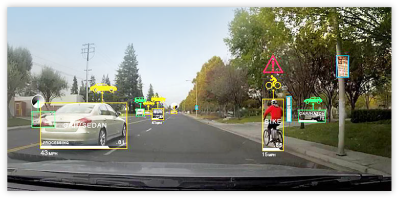
picture credit:nvidia.com
WHAT DOES IT DO?
Once it receives the inputs from all the sensors. it categorizes objects in your environment. This information is then sent into NVIDIA DriveWorks, a software that uses this immense amount of information and calculates the optimum route for the car to take to avoid any collision. This process is repeated at 8 terflops (1 teraflop = 1 trillion floating point calculations in a second) (I’m sorry, but 8 teraflops = 8000000000000 calculations in a second, just so there’s no confusion). It uses the output of these calculations to steer the car.

picture credit: NVidia.com
IS THIS TESTED? LEGAL? BEING USED?
It has been extensively tested and is complete legal. In fact, it will start rolling out on Volvo XC90s (Only a 100 of them, for now) next year (2017) as part of Volvo’s “Drive Me” autonomous car program. It will also be available for developers and anyone interested in Fall 2016.

Picture credit: techarp.com
WHATS NEXT?
NVIDIA CEO, Jen-Hsun Huang, who released the product, emphasizes that the future of this technology lies in identifying situations along with the environment. He claims the next step for autonomous technology will be to differentiate, for example, between cargo trucks and a fire truck, or between a long distance touring bus and a school bus and use this information to further improve the action it takes. These are all possible with improvements in the software algorithms that control the NVIDIA Drive PX 2 and, based on what they have already achieved, seems like a feasible next step.
We’re at the brink of a major overhaul in automotive technology. That statement rings truer and louder every passing day. Its news that will always be met with criticism, challenges and even sorrow, especially from people like me��who love to drive.
But automated driving technology, regardless of its reception, will be driven to reality soon. With or without us.
2 notes
·
View notes
Text
Highlight Reel(2015): One last look back at the year gone by, in 4k
A year is an extremely long time by technology standards; we see so many trends appear and disappear through a year that its actually pretty hard to remember most of them. This year has been no exception. We take a look back at what made this past year special.
1. Budget smart phones
The best trend to catch on this year is the modification to the term “budget”, at least in smartphone terminology. It started with the One Plus 2 and the Moto X Play and Moto X Style but these were just the beginning. One Plus X, The Huawei Mate S and the Moto Turbo have all increased the choices for anyone in the market for a mid-range android smartphone. There’s a trend we hope to see continue well into 2016.

Picture credit: technewstoday.com
2. (Insanely) fast charging
The market has craved an exponential upgrade in battery technology that extends battery life substantially for a long, long time. 2015 did not deliver on that front. Mobile manufacturers did, however, provide a work around; Fast charging. The ability to get over a half of your battery charged in less than 40 minutes (in most cases) is really impressive and kudos to Samsung, Moto and all the other brands to enable this. A special mention to Android as well for their Snooze function which drastically extends standby battery. But lets get one thing absolutely certain; we still need better battery technology.
No workarounds. Just extended battery life.
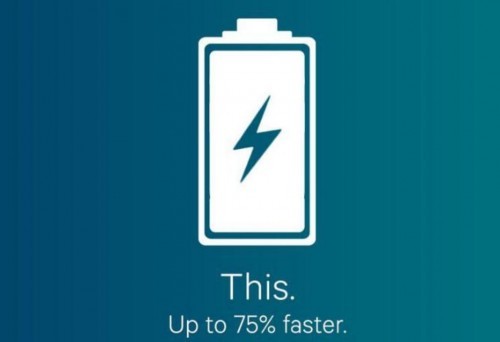
Picture credit: techotv.com
3. Flagship convergence and divergence
Samsung said goodbye to the removable battery and expandable storage. Lots of tears were shed, battles fought (with Apple lovers finally getting their chance to call someone else Wall-Huggers) and then the world moved on as always. This was the convergence. But it is extremely exciting to see different companies having unique stand out points; While Apple has 3D Touch, Samsung have their edge display and LG have their own version of a power-saving-functionality-improving-secondary screen. We also got the world’s first 4k screen on a phone from Sony, a 5000 mAh battery on a few phones. Lets hope everyone sticks to their guns and not go down the street of “same-features-different-brands”.

Picture credit: valuewalk.com
4. Microsoft is back.
From Windows 10 to the Surface Book, this has been Microsoft’s year of Renaissance. Beautiful design focused on functionality and purpose; Microsoft could very well be the company that most reinvented itself in 2015.

Picture credit: forumfoundrycdn.com
5. Tablets that want to replace your laptops are actually a thing
Is it because Apple finally made a gigantic iPad that has an external keyboard and a stylus that we finally accept what Microsoft have been doing since 2013? Maybe. But with the new Pixel, the HP Spectre and so many, many more iterations of this, this is a trend we are certain to see continue for the next years.

Picture credit: pcmag.com
Here’s wishing you all an extremely fruitful new year and, more importantly, one filled with awesome technology. Make sure you’ve got your new year resolutions right; they’ve got to be 4k.
0 notes
Text
Fine lines : When Fashion and Technology meet
While the true purpose of wearable technology continues to elude most, its popularity and influence continues to grow. It also speaks volumes about the shift we see in Technology Design. While the Apple did pioneer use of premium materials, I consider the HTC One M8 the origin on technology that needed to work great AND look exceptional.
The technology we are talking about though, is wearables. More specifically, smartwatches. Recently premier watch maker Fossil took over Misfit, a smart technology startup co-founded by John Sculley of Apple fame(?), for a substantial 260 million USD and this is no longer a surprise. In fact it’s just part of a pretty serious trend. Here’s a round up of what happens when the Fashionistas agree to sit down with the Nerds from Technology Town:
1 The. Tag Heuer Connected :

Yes. What the world really needed to believe in the future of smartwatches is an insanely expensive iteration from one of watch industry’s royal blood line. Sarcasm aside though, the Tag Heuer Connected is the first real belief we’ve seen from watch makers towards the future of wearables. It is the first luxury Android Wear smartwatch and it runs an Intel Core CPU, which Tag say can actually perform as well as some laptops (Intel don’t endorse this claim!). And on the face of it (literally), its a pretty bold move. The watch looks like a Tag (which is great news), who also have custom built 3 watch faces to keep up the premium look and also four apps built specially by Tag for Tag focusing on Sports (including RaceChrono Pro and GolfShot Pro). It comes in the three rubber bands as shown in the picture, has a big 46mm dial with a now standard 360x360 display and a big 410 mAh battery promising 25 hours of battery life.
So, what’s missing from a premium designer label smart watch with a big screen and big battery? You’re right, a big, premium price. It’s 1350 USD and you need to be one of 1000 lucky, and rich, people to get in on some Tag action.
2. Apple Watch Hermes
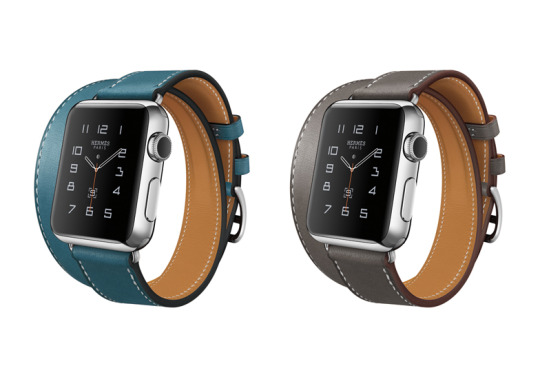
What does a technology monopoly like Apple do when it needs some fashion advice? What most of us WANT to do with our fashion questions; ask the French. Hermes has a LOT of history behind it, having been home to exceptional designers and personally, I feel it makes sense that they should team up with Apple; they are both symbolic companies albeit in two very different industries. Hermes tries to take the geekiness out of the Apple Watch and make it a trend. but only if you can shell out 1100 USD on a smart watch. You get a good looking premium leather brand which is Hermes’s trademark and a custom watch face, but that's where the designer brand influence ends. The rest of the watch is truly Apple; if that's good or bad is a debate unto itself, but a debate for perhaps a different time.
3. The Monteblanc E-Strap

I know what you are thinking; the fact that this device is smart on the strap and not on the watch face itself must count for disqualification. But the great thing about the smartwatch segment is that the rules have not been defined. I believe that the most basic and fundamental requirement from a smartwatch is that it has to be an exceptional watch. Everything else comes second. Not only does the strap give you notifications, monitor your fitness levels and keep going for a long time before you need to charge it, it’s also platform independent. This means you can use this with any phone with just a companion app. And its not exclusive to Monteblanc watches either; you can buy the strap for 250 USD onwards and use it with any premium watch dial you already own.
And once you take one look at the front of this watch, you’re glad no one tinkered with that gorgeous watch face. Beauty and “smarts”; does she not sound like a keeper?
Conclusion:
These are just a few of the many attempts that have already been made to integrate fashion with smartwatches. Gucci plus Will.i.am is an interesting (and a very, very bizarre) combination. The Fossil Q was Fossil’s earlier effort to make its own way in this segment. There are also examples that. sometimes, this partnership doesn’t work (*cough* Samsung Gear by Diesel *cough*) but looking at the number and quality of brands willing to invest in this market, I’d say its here to stay.
There’s also evidence, especially with the Moto 360 2015 edition and the Pebble Time Steel, that the nerds from the Technology Town might not need Fashion help and one day, maybe, we’ll see the two industries go head to head in a fight. A fight to one’s very sad, but very fashionable, end.
1 note
·
View note
Text
Innovation, above and beyond the Surface: Microsoft Surface Pro 4
If you had any lingering doubts that Microsoft would return to their competitive best, its about time you laid them to rest.
In 2012, Microsoft envisioned a new product for a new class of customer; lets call this new class of customer the “mobile and productive creative”. They promised a no compromise product that was extremely productive without giving up on portability, something great for consuming content but even better for creating content. They finally delivered on this promise with the Surface 3 and the Surface Pro 3. With the Surface Pro 4, they’ve mastered this product.

On the surface (no pun intended), there seems to be no major change from the previous version to this one. But that’s understandable if you consider the fact that the Surface 3 and the Surface Pro 3 were already exceptional devices. So what Microsoft did was listen to the people. And give them exactly what they wanted.
Here’s a list of whats new on the Surface Pro 4:
1. 6th generation Intel Cores
One of the key reasons for the incredible performance numbers on the Pro 4 is Intel; the new 6th generation Skylake processors are faster, smaller and more power efficient than ever before. Imagine 9 hours of battery life on a tablet that can run high end design software like Pro Engineer? And to stay away from humiliating anyone here, lets stay away from comparing the Pro 4 to any other device that comes with an optional keyboard and stylus (made by a company named after a fruit that keeps the doctor away, if you didn’t get it already). With Windows 10 developed to function at its best with these cores, this is the real deal if you are looking for portable performance and utility without exception.

2. Updated hardware and more storage options
RAM up to 16 GB, storage options up to 1 TB and choice between Core M and the Intel Core i series processors. The screen is even more high res and slightly bigger although it still fits in the footprint of the Pro 3 at 12.3 inches, 2736 x 1824 and 264 ppi. Still the same lovable 3:2 aspect ration and 10 point multi touch, it couldn’t really get any better than this. Could it?
3. Windows Hello and the new TypeCover
With passwords being “so-yesterday”, Windows Hello will sign you into your computer by scanning your retina. If you are however, for some reason not comfortable with this method, you can opt for a recently accepted method of scanning your fingerprint. This is done on the new TypeCover, which has better spacing of keys, better travel and is backward compatible with the Surface Pro 3.
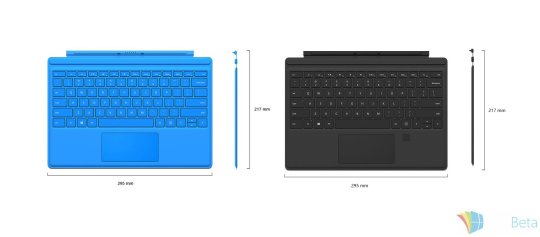
4. The New Surface Pen with interchangeable tips
So you can now channel the inner artist in you with no restriction with the new sizes and breadth of Surface Pen Tips on offer. Different dimensions for different applications show the attention Microsoft has been paying to their customers and what people are using the Surface to do.

The price for all this starts at 899$ and goes well into the 2000$ mark. Too much for a tablet, but not too much for a Surface. If you find the option that’s just right for you, it should be worth every penny you spend on it.
This is a deceptively major upgrade for an already great product. With many other companies finally agreeing with Microsoft on what the current and future customers will ask for, the Surface Pro 4 will have plenty of competition to deal with from this point forward. But there is one thing that’s easy to miss; Other companies have to begin their attempts at creating this product now.
Microsoft have done it since 2012.
0 notes
Text
The Return of the Nexii
-by PrimeOne
The wait is finally over. And oh boy was it worth it! The Nexus 5 fans were waiting for its successor since 2013 (Lets keep the Nexus 6 phablet out of this) and well rest assured, the fans are going to be really happy. Enter not one but two phones, the 5X and the 6P. The company did not do itself any favours with the Nexus 6 (Sorry!) by changing its ethos and going for a subsidized en masse phone with cutting edge technology and all the hardcore hardware. It makes sense for the current market but the Nexus 4 and 5 were a breath of fresh air- simple, cost effective and perfectly functional. This and more were part of the two handsets major allure.
With the 5X and the 6P, the company wants to give more choices to the customers keeping the googleness intact. The 5X is the core phone for the company with the ‘X’ in it(‘x’ is in the middle of Nexus as well) but the company still wanted to keep the larger form factor alive with the 6P. Google says it stands for ‘Premium’ for all the metal build and better processor. Fair enough!
So for the first time, the Nexus lovers have a choice to make- do you want the big one or the small one, plastic or metal? Hmmm, read the whole blog before letting off your horses!

The Nexus 5P: Nexus 5 redesigned
The Nexus 5X features a 5.2-inch LCD display with full HD resolution, just like the original Nexus 5. The Nexus 5X has a pixel density of 424 ppi. Under the hood you’ll find a 2GHz hexa-core Snapdragon 808 processor alongside 2GB of LPDDR3 RAM. With storage you have two options: 16GB and 32GB. As usual, there is ZERO SD-support.
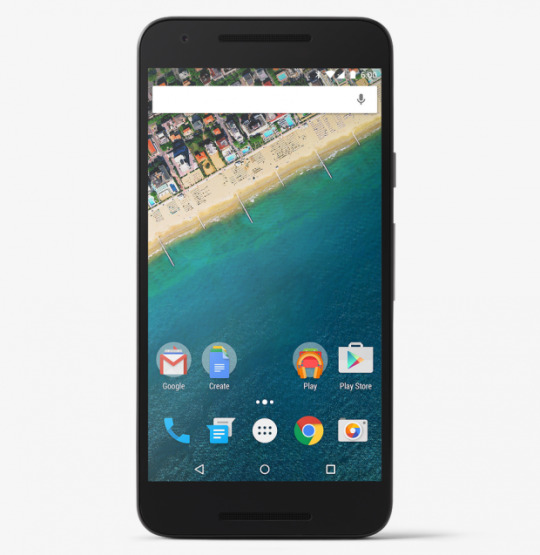
Google has also updated the camera. It is now a 12.3MP rear camera with an f/2.0 aperture and laser-assisted focus. On the front you have a 5MP unit for selfies and Hangouts. The Nexus 5X also has a fingerprint scanner for security and Android Pay which is called the NEXUS IMPRINT(We get it Google, after buying all of the ‘alphabets’, you prefer naming more stuffs now ), a Micro USB Type-C port and a 2,700 mAh battery. The handset will ship with Android Marshmallow as well, obviously.

So, plenty of high end specs huh! So how good is the camera? DxoMark says the camera is the best in the world now, well second only to Samsung Galaxy S6 Edge. So it’s better than LG G4 and even the current crop of iPhones. Bold! The bigger 1.55 micrometer pixels sure are helping!
Google also introduced the Android Sensor Hub, a new chip to offload processing activity from the CPU to boost efficiency. It’s called the ‘Doze’ Mode which detects when you haven’t used your phone in a while and can save upto 30% battery. The phone already charges twice as fast as the best iPhone in the planet.
Nexus 5X Specs In FULL
◾Operating System: Android 6.0 Marshmallow
◾Display: 5.2 inches, FHD (1920 x 1080) LCD at 423 ppi, Corning® Gorilla® Glass 3, Fingerprint and smudge-resistant oleophobic coating
◾Rear Camera: 12.3 MP¹, 1.55 µm pixels, f/2.0 aperture, IR laser-assisted autofocus, 4K (30 fps) video capture, Broad-spectrum CRI-90 dual flash
◾Front Camera: 5 MP, 1.4 µm pixels, f/2.0 aperture
◾Processors: Qualcomm® Snapdragon™ 808 processor, 1.8 GHz hexa-core 64-bit, Adreno 418 GPU
◾Memory & Storage: RAM: 2 GB LPDDR3, Internal storage: 16 GB or 32 GB
◾Colour Options: Carbon, Quartz, Ice
That Ice color is going to turn some heads for sure. That is cool as ice!

Nexus 6P: A new dawn for Nexus Flagships
The Nexus 6P is Google’s flagship, the handset designed to do battle with the iPhone 6s, Samsung Galaxy S6 and LG G4. Like the Nexus 6, the Nexus 6P features a 5.7in AMOLED WQHD display, meaning you’re looking at a rather awesome 2560 x 1440 pixel panel with a pixel density of 518ppi.

Unlike the Nexus 5X, the Nexus 6P uses Qualcomm’s Snapdragon 810 CPU. This is 64-bit chipset and it has proven time and time again its pedigree inside some of Android’s best handsets so far this year. The Nexus 6P also features 3GB of RAM, dual front-facing stereo speakers, a Micro USB Type-C port, a 12.3MP main camera, an 8-megapixel front-facing selfie camera, a massive 3,450 battery and either 16GB, 64GB or 128GB of storage.
Nexus 6P Specs In FULL
◾Operating System: Android 6.0 Marshmallow
◾Display: 5.7 inches; WQHD (2560 x 1440) AMOLED display at 518 ppi; 16:9 aspect ratio; Corning® Gorilla® Glass 4; Fingerprint and smudge-resistant oleophobic coating
◾Rear Camera: 12.3 MP¹; 1.55 µm pixels; f/2.0 aperture; IR Laser assisted autofocus; 4K (30 fps) video capture; Broad-spectrum CRI-90 dual flash
◾Front Camera: 8MP camera; 1.4 µm pixels; f/2.4 aperture; HD video capture (30 fps)
◾Processors: Qualcomm® Snapdragon™ 810 v2.1, 2.0 GHz Octa-core 64-bit; Adreno 430 GPU
◾Memory & Storage: RAM: 3 GB LPDDR4; Internal storage: 32 GB, 64 GB, or 128 GB
◾Color: Aluminium; Graphite; Frost
◾Media: Dual front-facing stereo speakers; 3 microphones (2 front, 1 rear) with noise cancellation
◾Battery: 3,450 mAh battery; Fast charging: up to 7 hours of use from only 10 minutes of charging
◾Wireless & Location: LTE cat. 6; Wi-Fi 802.11a/b/g/n/ac 2x2 MIMO, dual-band (2.4 GHz, 5.0 GHz); Bluetooth 4.2; NFC; GPS, GLONASS; Digital compass; Wi-Fi use requires 802.11a/b/g/n/ac access point (router). Syncing services, such as backup, require a Google Account.
◾Ports: USB Type-C; Single Nano SIM slot: 3.5 mm audio jack
◾Material: Anodized aluminum
Some noteworthy things here are the battery (love it) and well the design!
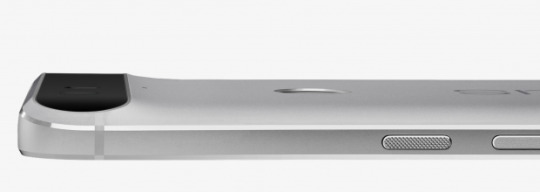
It’s a total new design from the back. The bump at the back looks better that what we earlier anticipated. It sure has a better and bigger Sony sensor but nothing more. Google says that the bump was an important aspect of the design and it was pretty much thought off well before. If you buy a Nexus 6P, people around are sure going to notice unless you buy a whacky cover that hides all that. It will be interesting what the Case makers are going to come up with.
Like the new iPhones, Google are also using space grade aluminum metal for the 6P and the finishing on the phone is just fantastic. Nice work, Huawei!
Google has now confirmed that both the Nexus 5X and Nexus 6P will begin shipping during October. The Nexus 5X starts at $379 and the Nexus 6P starts at $499. Google Protect can give you two years of protection form accidental damage. That should make your wallet 59$ (5X) and 89$ (6P) lighter!

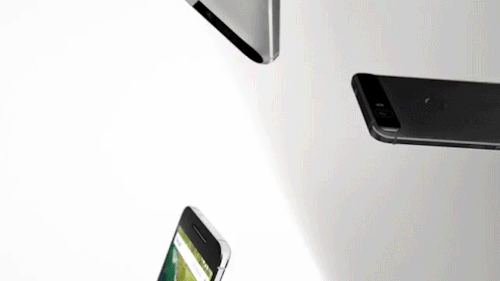
Over all, I am quite happy with both the phones. There is not much you are compromising if you go for the 5X. Glad that google is using the same camera technology for both unlike the other companies. I think it’s the best ‘ounce for ounce’ phone in the market though we will actually have to wait for the battery and the camera reviews to hit us before I engrave that. OnePlus Two and Moto X Play have some stiff competition here. 6P is for the people who are looking for that X factor (with a ‘P’ in it). With the 6P, Google has asserted that if you really want a top end metallic phone, you don’t have to go to Apple or Samsung!
What else are you getting? That neat and clean Marshmallow with improved notifications to alert you to any update without being disruptive. You can also search for apps straight on the search bar instead of just a basic Google search, and the numbers of pre-loaded apps have been reduced. If you still hate them, you’re now able to uninstall as you wish.
These phones really seem like a great catch. Well if you were already decided on which phone to buy, you just might have to think again. We are looking forward for these phones to hit the Indian market and see how far they can go.
Next HTC, you’re up!
1 note
·
View note
Text
The Future is here and, apparently, it comes with Falcon Wing Doors: The Tesla Model X
It’s not very often that we get to see a revolution unfold, but Elon Musk, CEO of Tesla and SpaceX seems to be making a habit of revealing the future. He’s done it with SpaceX, a commercial space transport company obsessed with making space travel affordable and putting people on Mars. He’s done it twice with Tesla, with the Roadster and the Model S. And now, he’s done it again.
Tesla want to show that a fossil-fuel-less future is not as boring as we thought, but it could be even cooler than the present. They want to show you that all types and categories of cars can go electric and, being done with the sports car and sedan segments, it is now time for the SUV.
Before we even say anything about it, have a look:

It’s the safest all-electric SUV with 6 or 7 seats and 2 boots. It does 0-100 kmph in 3.2 seconds (when in LUDICROUS mode), hits a flat out 250 kmph(155 mph) and can do well over 400 km (257 miles) per charge. These stats are enough to rival any car in the current market by itself, but not with the Model X. For the Model X, those numbers are just the beginning.
1. Falcon Wing Doors
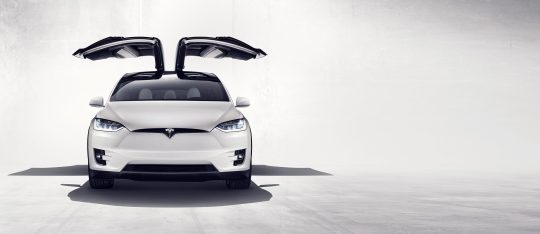
The Falcon Wing Doors are not just for show; they are double hinged so that they don’t have to move in an arc but can move upwards and outwards independently. This lets you stand up inside the car, have better access to the second and third rows of seats and need less space to get out of the car when you park close to other vehicles. It also has sensors which detect the space available and the door’s trajectory is calculated in real time to open safely.
2. Medical Grade Air
It is the first car to come with air filtration technology that ensures the air inside the car is as clean as inside a hospital operation theater. It’s even got a Bioweapon Defense Mode (THAT IS THE ACTUAL NAME OF A BUTTON ON THE DASH!) that activates filters and ensures no bacteria, viruses or soot enters the car atmosphere. The timing of this feature notwithstanding, this car is currently ready for the apocalypse and that's as much as you can ask for in terms of safety.
3. The view to beyond

Seems so insignificant that they focused on the windshield so much but attention to detail seems to be a key to success. Look at that view, and tell us you don’t think it was worth it. We dare you to.
4. Seating for 7, without asterisks

One advantage of having an electric drive is that there isn’t an engine at the front and you thus have extra space for luggage. All the seats are independently adjustable, have individual safety belts and are just a work of art.
5. Active Safety
It has RADAR, SONAR and camera technology that provides active safety. The car will help you brake in emergencies, will warn and assist you with avoiding collisions and, in case of a crash, will protect you better than any car available today. They chances of serious injury in a crash are at 6.5 % (lowest rating ever) and that's after the chances of a crash itself are seriously low thanks to all the active safety features.
So there you have it; the Future. The price of this future? 132,000 USD. Too much for a car, you say? We say this is more than a car; Its a bioweapon defense mechanism, a work of art and technology giving us a glimpse into tomorrow. And there’s no price too big for a safe, clean and happy future. Also, Tesla have promised a more affordable Model III to release in 2017 for under 20,000 USD and while we don’t trust Tesla with their deadlines (the Model X was supposed to be in production in 2013), you can count on them for class and quality.
If you haven’t kept up with Tesla, its about time you started. They are pioneering our transition to an all-electric world and, more than everything else, they are justifying their claim that this transition does not involve compromises. There’s no need to leave the insanity of speed and driving behind. No need to forgo long drives and to have smaller groups.
No compromises on the road to the Future. A road best experienced through a panoramic wind shield, while you fly away on the Falcon Wings of the Tesla Model X.
1 note
·
View note